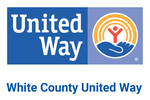|
A Brief Overview of the Opioid Epidemic (Part One)
You may be surprised to learn that the United States has a long history of opioid use. The pendulum of public policy and perception towards opioid use has swung widely from one extreme to the other. In the 1800’s, cocaine and morphine were completely unregulated and widely used in treating a variety of common ailments from diarrhea to toothaches. Morphine was used extensively to treat terrible battle injuries of the Civil War. Thousands of soldiers became addicted to the drug and remained addicted after the end of the war. Addiction to morphine became known as the “Soldier’s Disease.” In 1874, heroin was introduced as a ‘non-addictive’ replacement for morphine. Heroin was touted as the miracle cure for many common ailments, including colicky and teething babies, coughs, pain, indigestion, insomnia and pneumonia. Many middle class women were addicted to laudanum (an elixir of opiates mixed with alcohol) for the treatment of female afflictions.[1] Opiates were given as freely as aspirin is used today. In 1859, cocaine was also developed by drug makers and sold to help morphine addiction. It cleared nasal passages, too, and became the official remedy of the Hay Fever Association.[2] In the early 1900’s the pendulum swung the other way resulting in an “opio-phobia.” Public opinion of the increasing problems associated with addiction at the turn of the century brought about the Harrison Act of 1914, which made sales of cocaine and heroin as prescription only. Heroin could no longer be used in over-the-counter remedies or in consumer products. However, a clause applying to doctors allowed distribution "in the course of his professional practice to treat disease." This clause was interpreted after 1917 to mean that a doctor could not prescribe opiates to treat addiction, since addiction was not considered a disease. A number of doctors were prosecuted, imprisoned and lost their medical license for treating substance abuse. Doctors so feared prescribing opioids that even patients suffering the excruciating pain of end stage cancer were denied opioid treatment.[3] Many people who had begun use of opioids prior to 1917 turned to illicit drugs. Substance use began to be criminalized and the War on Drugs began. More legislation was passed with increasingly harsh penalties for drug sale and use. People involved in substance abuse were viewed as morally weak, skid row bums, wrongdoers and perpetrators of their own problems. The public believed that when someone overdosed, “they got what they deserved.”[4] Next time we will continue our discussion of how a variety of factors brought us to the opioid crisis of today. [1] https://www.narconon.org/drug-information/heroin-history-1900s.html [2] https://www.statnews.com/2017/10/29/opioid-epidemic-shares-chilling-similarities-with-past-drug-crises/ [3] http://www.druglibrary.org/schaffer/library/studies/cu/cu8.html [4] https://www.vox.com/science-and-health/2017/12/18/16635910/opioid-epidemic-lessons
0 Comments
Your comment will be posted after it is approved.
Leave a Reply. |
AuthorLynn Saylor is the AmeriCorps member working with the United Against Opioid Abuse Initiative alongside the White County United Way. She is a major facilitator of the United Council on Opioids serving White County and a regular contributor to local media. Archives
October 2020
Categories
All
|

 RSS Feed
RSS Feed
